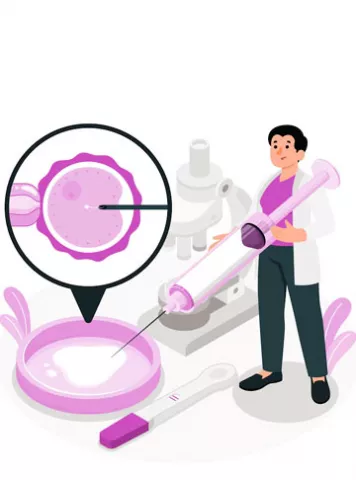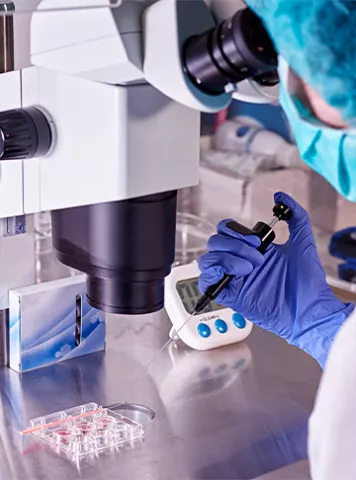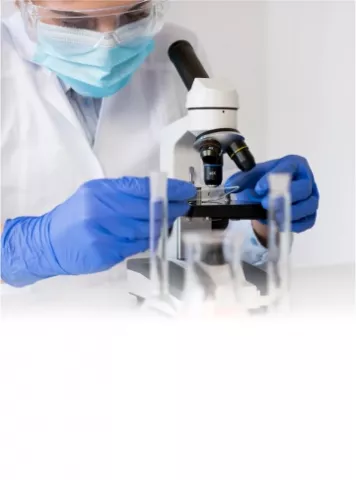What is Azoospermia?
Azoospermia is a condition in which a man has no measurable sperm in his semen. Sperm is essential for fertilizing an egg, and the absence of sperm can lead to infertility. It's important to note that azoospermia does not mean a man cannot have children, but it does indicate that there is a significant barrier to achieving pregnancy naturally.
Who can get Azoospermia?
Azoospermia can affect men of all ages and backgrounds. It is estimated that approximately 1% of all men and 10-15% of infertile men suffer from azoospermia. While it is more common among those who are struggling with infertility, it can also occur in men with no apparent fertility issues.
What are the Types of Azoospermia?
There are two primary types of azoospermia:
1. Obstructive Azoospermia:
This type of azoospermia is caused by a physical blockage that prevents sperm from reaching the ejaculate. The blockage can occur anywhere along the reproductive tract, from the testicles to the urethra. Common causes of obstructive azoospermia include congenital conditions, infections, and previous surgeries.
2. Non-obstructive Azoospermia:
Non-obstructive azoospermia occurs when the testicles fail to produce enough sperm or produce sperm with severe abnormalities. This can result from various factors, including genetic conditions, hormonal imbalances, chemotherapy, or radiation therapy.
What are the Causes of Azoospermia?
Azoospermia can be caused by a variety of factors, and the underlying cause often determines the type of azoospermia. Here are some common causes:
1. Obstructive Causes:
a. Congenital blockages
b. Infections, such as epididymitis
c. Previous surgeries, including vasectomy
2. Non-obstructive Causes:
a. Genetic conditions, like Klinefelter syndrome
b. Hormonal imbalances
c. Exposure to radiation or chemotherapy
d. Certain medications and recreational drugs
e. Chronic medical conditions, such as diabetes
What are the Symptoms of Azoospermia?
Azoospermia itself does not have specific symptoms. Men with azoospermia typically do not experience any pain or discomfort related to the condition. Instead, the symptoms are often related to the underlying causes, such as hormonal imbalances or infections. Common symptoms include:
- Low libido (sex drive)
- Erectile dysfunction
- Testicular pain or swelling
- Gynecomastia (enlarged breast tissue)
How is Azoospermia Diagnosed?
Diagnosing azoospermia typically involves a series of medical evaluations and tests. Here is how the diagnosis process usually unfolds:
1. Medical History: The doctor will gather information about the patient's medical history, including any past surgeries, infections, or exposure to risk factors.
2. Physical Examination: A physical examination, including a genital exam, is performed to identify any physical abnormalities or signs of infection.
3.Semen Analysis: A semen sample is collected and analyzed in a laboratory to determine if sperm are present. Azoospermia is confirmed if no sperm are detected.
4. Blood Tests: Blood tests may be conducted to assess hormone levels, which can help identify hormonal causes of azoospermia.
5. Imaging Studies: Imaging tests like ultrasound or MRI may be used to identify any structural abnormalities in the reproductive tract.
6. Genetic Testing: Genetic testing can uncover any underlying genetic conditions that may be causing non-obstructive azoospermia.
How is Azoospermia Treated?
The treatment of azoospermia depends on its underlying cause and type. Here are some common treatment options:
1. Obstructive Azoospermia Treatment:
a. Surgical procedures to remove blockages or correct structural abnormalities.
b. Reproductive techniques like sperm retrieval for use in assisted reproductive technologies such as in vitro fertilization (IVF)
2. Non-obstructive Azoospermia Treatment:
a. Hormone therapy to address hormonal imbalances.
b. Fertility medications to stimulate sperm production.
c. If treatment is unsuccessful, assisted reproductive technologies (ART) like IVF with intracytoplasmic sperm injection (ICSI) can be considered.
It's crucial to note that not all cases of azoospermia can be successfully treated, and the prognosis varies depending on the individual's specific circumstances.
Conclusion
Azoospermia is a complex condition that can have a profound impact on a man's fertility and family planning. Understanding its causes, symptoms, and available treatment options is essential for those affected by it. While the diagnosis of azoospermia can be disheartening, advances in reproductive medicine offer hope to many couples looking to start a family. Seeking the advice of a fertility specialist and exploring various treatment options can provide solutions and open doors to parenthood.
Articles
2022


Guide to infertility treatments ICSI
Microsurgical Epididymal Sperm Aspiration (MESA) in ICSI
MESA (Microsurgical Epididymal Sperm Aspiration) is a surgical sperm extractio...
2022


Guide to infertility treatments ICSI
Advantage and Disadvantage of ICSI
Pros and Cons of ICSI ICSI or Intracytoplasmic Sperm Injection is a form of...
2022


Guide to infertility treatments ICSI
In this world full of health concerns and complicated terminologies that tag a...
Pregnancy Calculator Tools for Confident and Stress-Free Pregnancy Planning
Get quick understanding of your fertility cycle and accordingly make a schedule to track it















